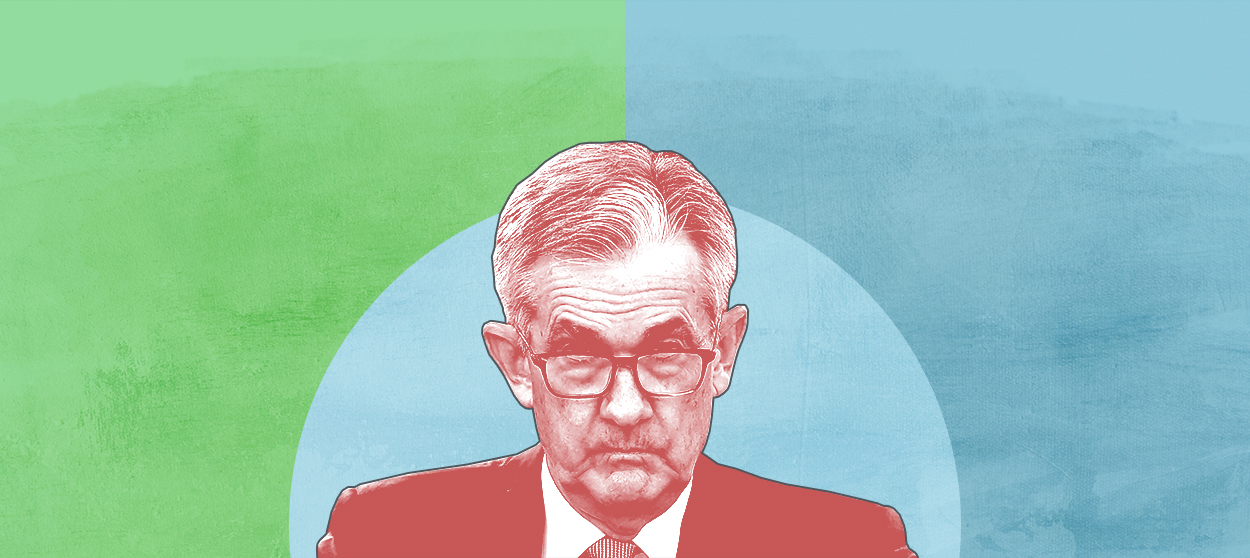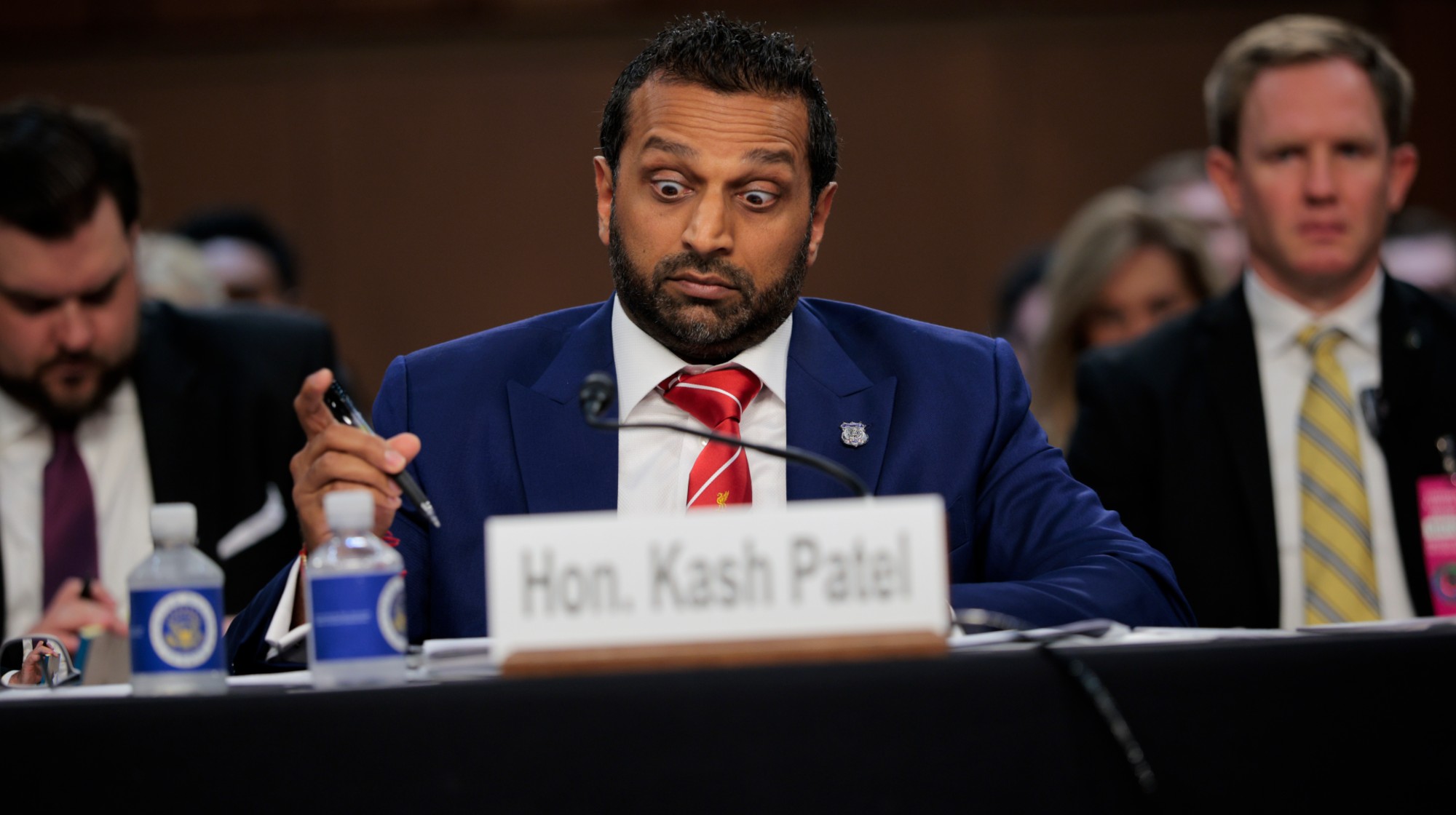A sudden interest-rate spike highlights two contradictory Fed trends
The central bank faces a choice: corridor or floor?


American financial markets went for an interesting ride last week. A particular market that specializes in providing banks and firms with short-term cash was hit by an unexpected squeeze last Monday. Interest rates in that market briefly quadrupled to 10 percent by Tuesday morning. That jump bled into the Federal Reserve's target interest rate, driving it up to the very top of the range the Fed is currently targeting.
It was an exceedingly weird momentary panic that's had Fed-watchers talking since. And it highlights how two basic trends in Federal Reserve monetary policy have evolved since the 2008 crisis — and how they just ran headlong into one another.
Before the Great Recession, the Fed relied on a "corridor system" to target interest rates. The central bank bought and sold U.S. Treasuries with the major banks, and those exchanges moved reserves — the foundational layer of money the Fed creates and pumps out to backstop the financial system — in and out of the banking system. By changing the overall supply of reserves in the banking system, the Fed could exert upward or downward pressure on the interest rate banks charged each other for reserves.
The Week
Escape your echo chamber. Get the facts behind the news, plus analysis from multiple perspectives.

Sign up for The Week's Free Newsletters
From our morning news briefing to a weekly Good News Newsletter, get the best of The Week delivered directly to your inbox.
From our morning news briefing to a weekly Good News Newsletter, get the best of The Week delivered directly to your inbox.
The thing is, for the corridor system to reliably function, the Fed had to keep the overall supply of reserves on a short leash. When the 2008 crisis hit, the Fed flooded the banks with reserves to shore them up; that increase drove the interbank lending rate to permanent zero, effectively wiping out the corridor system's functionality.
Since then, the Fed has shifted to a "floor" system: It pays the banks an interest rate on the reserves they're holding. For business model reasons, no bank is going to charge other banks a lower interest rate than the Fed is paying. That way, the Fed can hike the interest rate it pays to push the "floor" of its target up from zero.
That's the first trend in the Fed’s evolution.
The second trend — which just collided with the first — also dates back to the Great Recession. That massive flood of reserves into the banking system required a mirroring flood of securities into the Fed. Between 2008 and 2015, the Fed's balance sheet soared from less than $1 trillion to about $4.5 trillion.
A free daily email with the biggest news stories of the day – and the best features from TheWeek.com
In more recent years, the central bank has tried to wind that balance sheet back down, to roughly $3.8 trillion currently. And that reduction intrinsically required the Fed to pull reserves back out of the banking system. Overall, that reduction shouldn't have presented a threat to the floor system. Certainly, no one thought it would.
But there is no one financial market; there are lots of overlapping financial markets, with different needs and limitations. The aftermath of the Great Recession also brought a host of new regulations, both at the national level (via laws like Dodd-Frank) and at the international level (via agreements like Basel III). In many cases, those regulations require banks to hold much greater financial cushions; the system may have ample reserves, but what portion of those reserves can be moved to another party on short notice, and under what conditions, is another matter.
Finally, last week brought two additional complications: A big batch of corporate tax payments settled, and — thanks to the run-up in federal deficit spending — a big batch of Treasury bonds also sold off. Both events meant even more reserves were momentarily sucked out of the system.
This confluence of factors created a momentary perfect storm in one market in particular: repurchase agreements, commonly known as "repos."
In the repo market, one party sells a second party a security (usually a U.S. Treasury bond) in exchange for cash, with an agreement that the first party will eventually buy the security back at an agreed-upon price. It's basically a way for the first party to get access to quick cash that it needs to plug some immediate, day-to-day holes in its finances.
The repo market moves over $1 trillion around each day. And for it to function smoothly, the second parties — the ones who initially provide the cash in exchange for securities — need access to reserves. Thanks to the increased regulations, plus the momentary dual hit of the tax and Treasury bond settlements, the supply of reserves for the repo market briefly crossed into too-little territory. The interest rate on repurchase agreements shot up, and the change proved powerful enough to push the Fed's target rate up as well. That's the rate at which banks lend to one another, which then filters out into the rest of the economy's interest rates. Basically, it meant monetary policy was threatening to become tighter than the Fed intended, which would slow the economy more than intended as well.
The central bank and its officials have sounded quite happy about the floor system. They like that the Fed is doing less direct buying and selling of securities in the markets, and they feel the floor system provides more stability to their target rate. But for a short time last week, the supply of reserves was no longer big enough to reliably push rates to zero, allowing the Fed to push them back up with its own interest payments. Instead, the supply of reserves became scarce enough to push the Fed's target rate up all on its own.
The Federal Reserve temporarily patched the problem up by entering the repo market itself, and offering to buy Treasuries in exchange for reserves. As economist David Beckworth put it, "the Fed unintentionally stumbled from its floor operating system of the past decade back into a corridor operating system."
There are multiple routes the Fed could take here: It could make its new trading operation in the repo market permanent, or it could start expanding its balance sheet again. But it’s never actually been clear why the Fed wanted to reduce its balance sheet or get out of the direct buying and selling of securities in the first place. There is a vague sense that, in a capitalist free market society like America's, both a big Fed balance sheet and direct Fed interventions in financial markets are things we'd ideally avoid. Unfortunately, when it comes to how the Fed can actually do its jobs of managing the macroeconomic via interest rate adjustments, those two goals are in tension with each other.
Beckworth, for his part, thinks the Fed should return to a revamped form of the corridor system, and he points to Canada's central bank as an example of that approach done right. But however the Fed sorts out this latest identity crisis, it may want to do it sooner rather than later. With another big batch of financial settlements hitting the economy at the end of the quarter and the end of the year, that perfect storm may arrive again.
Want more essential commentary and analysis like this delivered straight to your inbox? Sign up for The Week's "Today's best articles" newsletter here.
Jeff Spross was the economics and business correspondent at TheWeek.com. He was previously a reporter at ThinkProgress.
-
 The Trump administration says it deports dangerous criminals. ICE data tells a different story.
The Trump administration says it deports dangerous criminals. ICE data tells a different story.IN THE SPOTLIGHT Arrest data points to an inconvenient truth for the White House’s ongoing deportation agenda
-
 Ex-FBI agents sue Patel over protest firing
Ex-FBI agents sue Patel over protest firingspeed read The former FBI agents were fired for kneeling during a 2020 racial justice protest for ‘apolitical tactical reasons’
-
 The real tragedy that inspired ‘Hamlet,’ the life of a pingpong prodigy and the third ‘Avatar’ adventure in December movies
The real tragedy that inspired ‘Hamlet,’ the life of a pingpong prodigy and the third ‘Avatar’ adventure in December moviesThe Week Recommends This month’s new releases include ‘Hamnet,’ ‘Marty Supreme’ and ‘Avatar: Fire and Ash’
-
 Has Zohran Mamdani shown the Democrats how to win again?
Has Zohran Mamdani shown the Democrats how to win again?Today’s Big Question New York City mayoral election touted as victory for left-wing populists but moderate centrist wins elsewhere present more complex path for Democratic Party
-
 Millions turn out for anti-Trump ‘No Kings’ rallies
Millions turn out for anti-Trump ‘No Kings’ ralliesSpeed Read An estimated 7 million people participated, 2 million more than at the first ‘No Kings’ protest in June
-
 Ghislaine Maxwell: angling for a Trump pardon
Ghislaine Maxwell: angling for a Trump pardonTalking Point Convicted sex trafficker's testimony could shed new light on president's links to Jeffrey Epstein
-
 The last words and final moments of 40 presidents
The last words and final moments of 40 presidentsThe Explainer Some are eloquent quotes worthy of the holders of the highest office in the nation, and others... aren't
-
 The JFK files: the truth at last?
The JFK files: the truth at last?In The Spotlight More than 64,000 previously classified documents relating the 1963 assassination of John F. Kennedy have been released by the Trump administration
-
 'Seriously, not literally': how should the world take Donald Trump?
'Seriously, not literally': how should the world take Donald Trump?Today's big question White House rhetoric and reality look likely to become increasingly blurred
-
 Will Trump's 'madman' strategy pay off?
Will Trump's 'madman' strategy pay off?Today's Big Question Incoming US president likes to seem unpredictable but, this time round, world leaders could be wise to his playbook
-
 Democrats vs. Republicans: who are US billionaires backing?
Democrats vs. Republicans: who are US billionaires backing?The Explainer Younger tech titans join 'boys' club throwing money and support' behind President Trump, while older plutocrats quietly rebuke new administration
